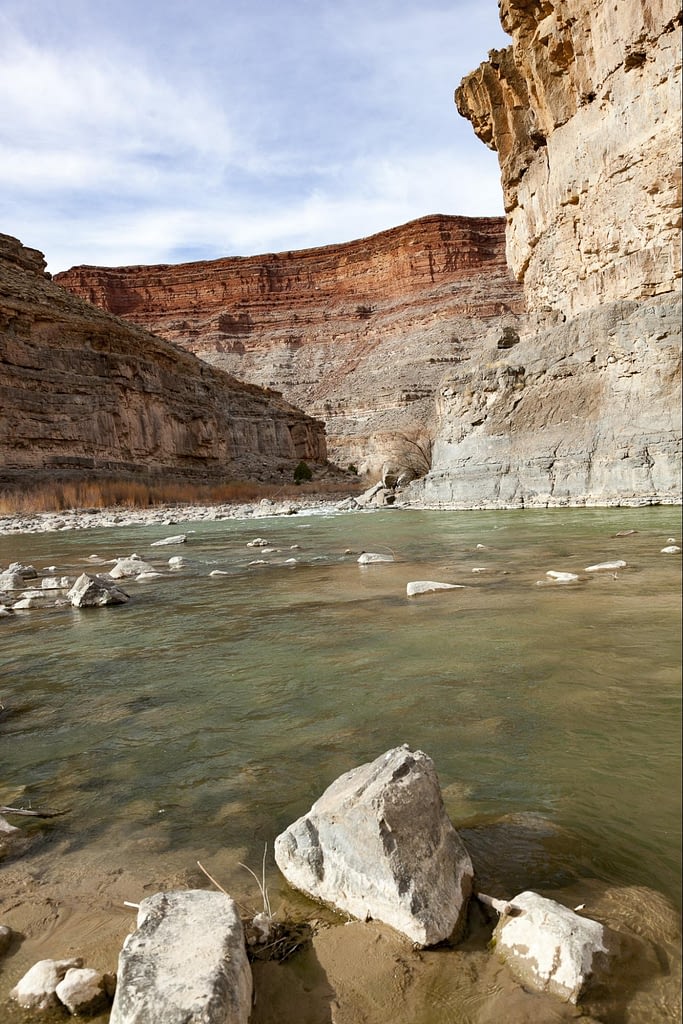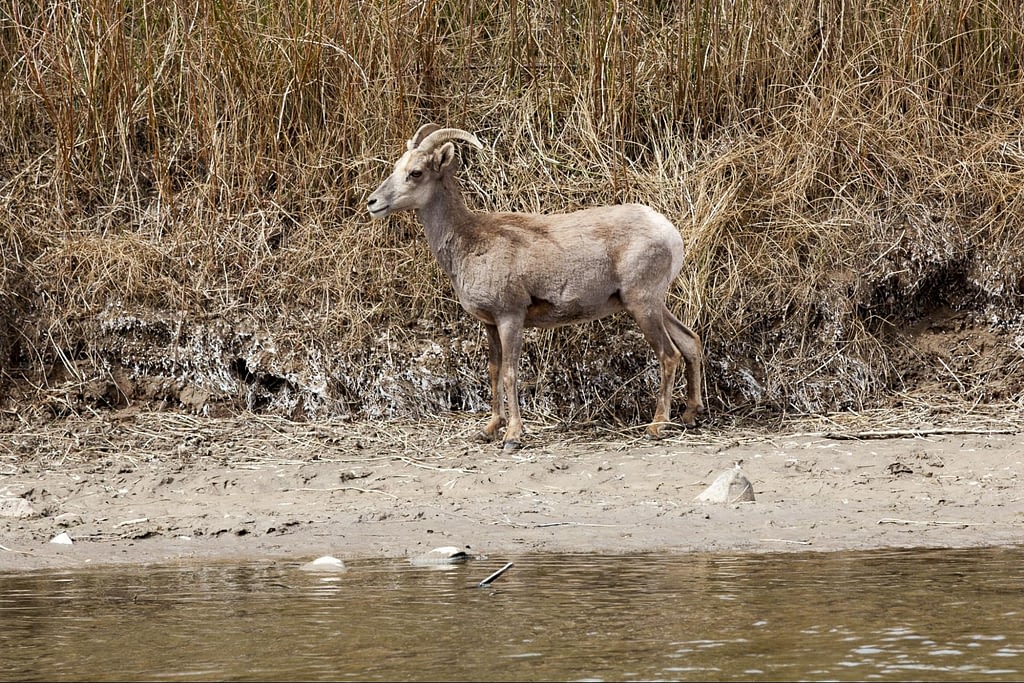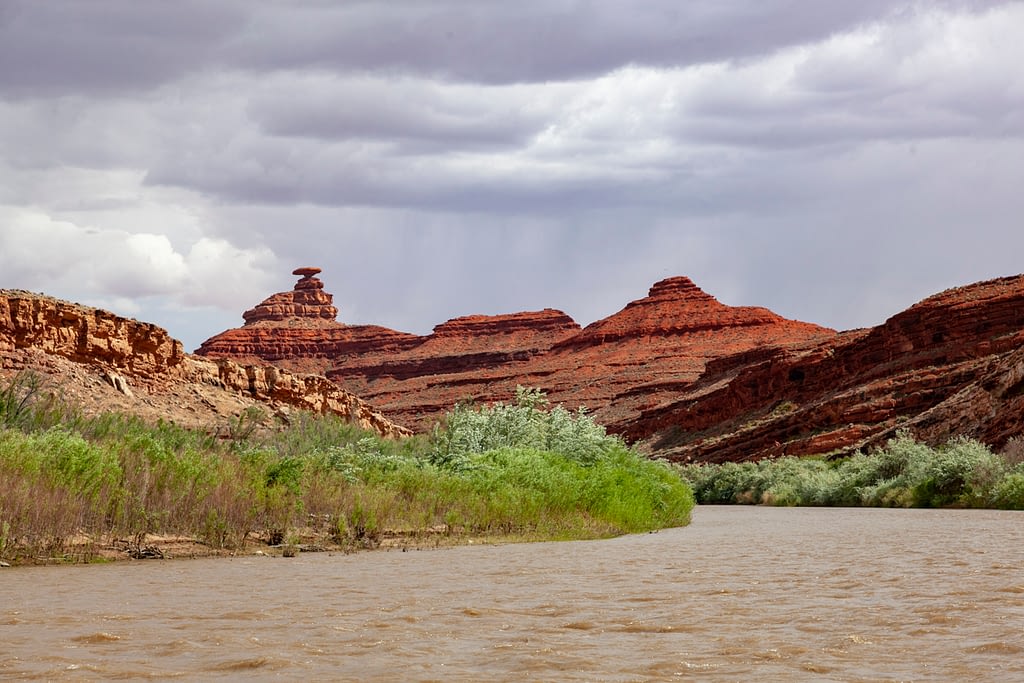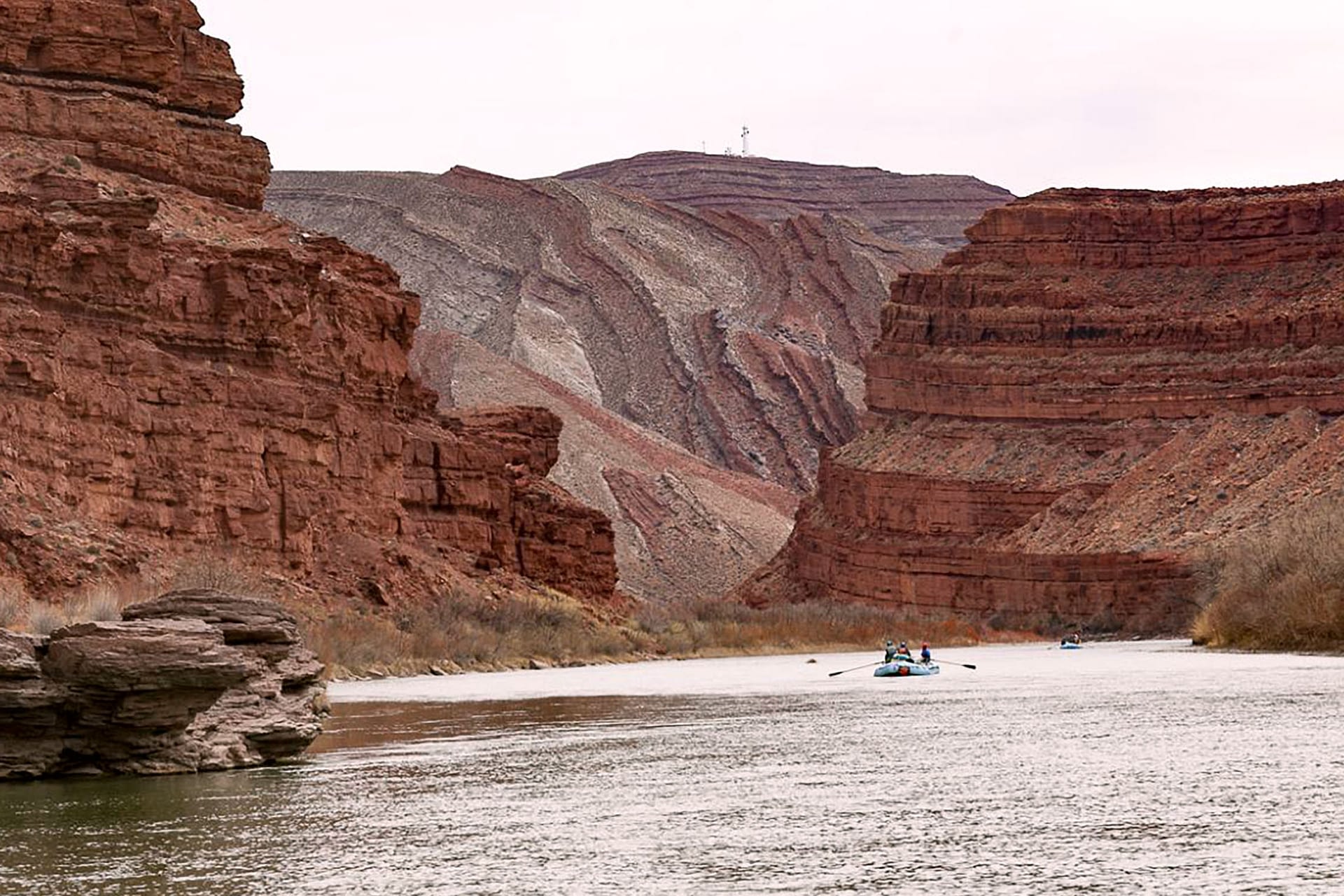Learning and Falling in Love With the San Juan River
Words and photos: Jan Noirot
“No! No! Nose in, stern out” cries the boat captain as I struggle to change the orientation of the raft to make it around the river bend without tangling in the snarled willows at the river bank. I can feel my cheeks flush at the correction. I am not new to oars and boats so manipulating the boat is not the problem. In fact, most sports have come somewhat naturally to me. I know how to settle in to a turn and let the skis, or bike, or kayak do their job to change direction.
My brain wants to swoop the raft around the river bend, not position the raft nose-in for the river to take us. It is counter-intuitive to me, and I feel embarrassed, stupid even. It was an inauspicious beginning to one of the most amazing three-day trips of a lifetime. So different from most trips I have taken, that my embarrassment at the start was almost instantly forgotten.
Getting to Know San Juan River Rafting
Some rivers are known for their rapids—a roller coaster made of water, like Utah’s Cataract Canyon in Canyonlands National Park. Some, like the Grand Canyon, are known for spectacular scenery. Utah’s San Juan River, as I found out, is filled with archaeology, history, and wildlife. It is certainly scenic, and the rapids add a little spice, but it is those other dimensions that captured my attention and held it.
Wild Expeditions runs day-long and multi-day raft trips on the San Juan River in Southern Utah, as well as land-based trips to the various archaeological sites in Bears Ears National Monument. I was a guide for their land trips. The boss wanted to cross-train the land and river guides so that we could speak to customers intelligently about the various trips. What better way to train than on an actual trip?
As we are loading gear into the rafts, I glance upstream and down, memories flooding my head of the petroglyphs that reside on the sandstone bluffs behind me. The images range from the more recent cowboy, Ute, and Navajo peckings (within one hundred years) to the ancient Barrier Canyon-style glyphs and even some mammoths carved by Clovis-era peoples (fourteen thousand years ago). We are not even in the boat yet!
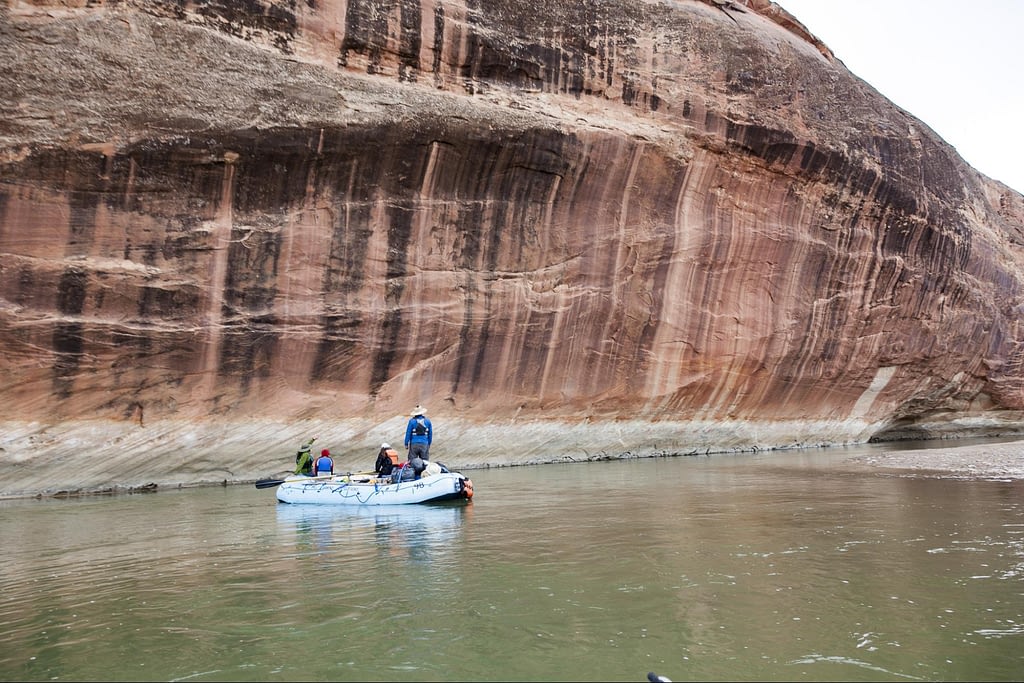
After my stint at trying to be boat captain on the calm, straight waters, the real captain tells us to look up at the “Tiger Wall.” The river slams into a 150 foot wall of sandstone and veers sharply to the right. Stripes of desert varnish cover the wall, made by years of leaching minerals that have stained the wall black where they have run down in the rain.
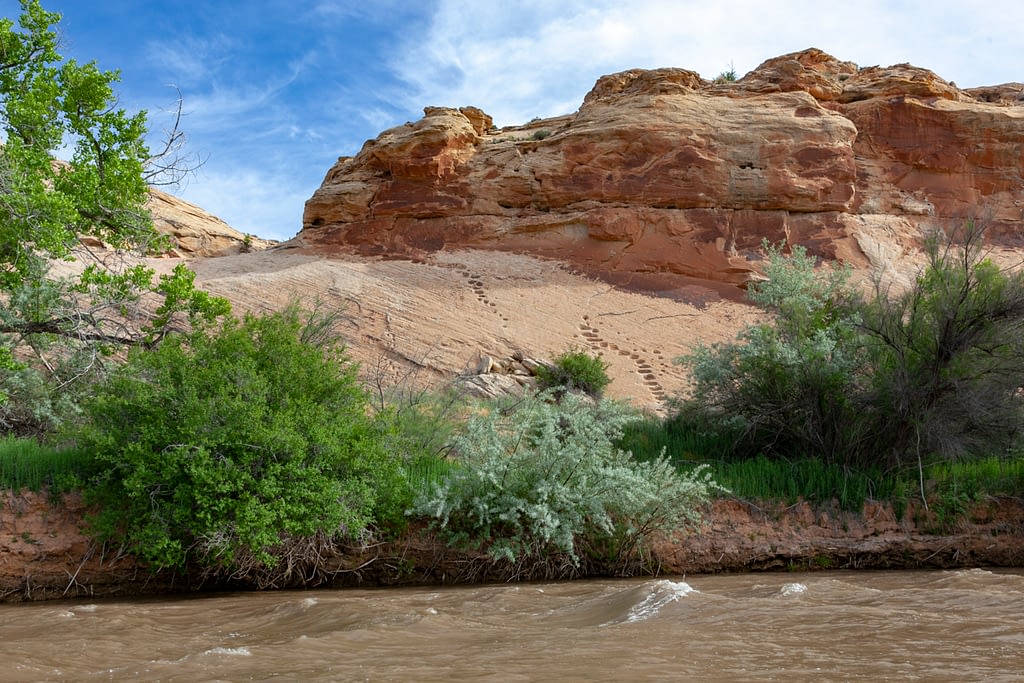
Then our captain says to look right. Amazingly, there are steps carved into the sandstone so deeply that even in almost direct sunlight they stand out. The Ancient Puebloans (Anasazi) must have spent hours chipping and hammering each step (known as “Moki” or “Moqui” steps) to provide a way up the almost vertical cliff. I suppose they are either an escape route from the river or a shortcut to farmlands above. Maybe it is a trick on enemies as the paths of the up and down steps don’t align.
In short, the first hour of San Juan River rafting is NOT boring!
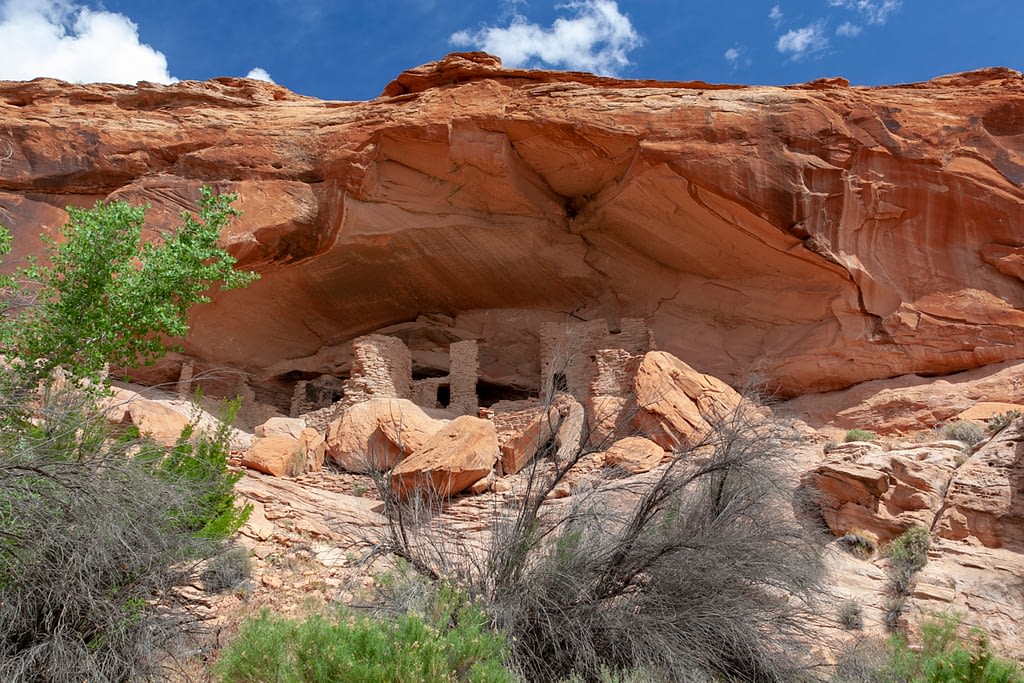
Indeed, evidence of the Ancestral Puebloans who lived here until approximately eight hundred years ago filled the first part of the trip. The boat captains could stop so often that they would not make progress down the river.
One of the best preserved and most interesting ruins along the river is the River House. Next to it is a quarter-mile-long petroglyph panel called the Butler Wash Panel, sometimes known as the Kachina Panel. I have been to it many times from the land side, but have never had guides explain various features and drawings and stones for grinding corn. It was wonderful.
One can stare at the wall of petroglyphs, and more and more of them pop out making you wonder where they had been before.


The Logistics of Rafting and Camping the San Juan River
The amount of gear and food that our captains can fit into their boats is astonishing—as my lactic acid filling arms could attest. Carrying the gear, setting up the privy, pitching my tent, and fixing the meal: whew! The food was yummy, the chairs by the fire were comfortable and warm. And yet, we were not done. Time for first aid drills, and turning boat benches into first aid litters to practice carrying victims. I could feel my biceps talking again as we carried one another around camp on the litter.
And then, the canyon turned orange. The last rays of the early spring light crept up the cliff, reflecting and embracing us in coral light. It was magic.
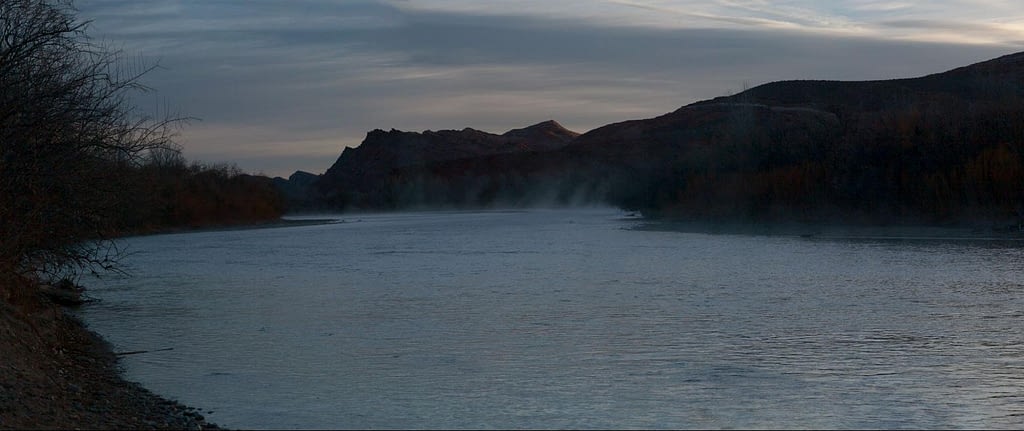
I was looking forward to a lovely night in the sand, listening to the river chortle its way to Lake Powell. Knowing the March nights would be cool along the river, I cleverly layered up, putting my sleeping bag in a bivy sack, under a blanket, and on a pad, in a tent, and fell asleep.
But, I had violated one of the age-old outdoor adages: don’t test your gear for the first time when you really need it. I had carried a bivy for years in my pack in case of emergency, but had never actually used it. The winter bivy sack is lined with foil to reflect heat back in colder temperatures. Unknown to me was the fact that it also did not breathe to let moisture out. I got warm and warmer. Then moisture condensed inside the bivy onto my sleeping bag, which in turn got wet. Then, you guessed it: I got very cold! I shivered, curled up, and waited for morning.
When I finally sat up, I realized that the river fog had also rolled in and frozen on my tent walls. Every jiggle caused the frost to release and snow down on me and the dry clothes that I was attempting to put on.
Lesson learned. The next night—no bivy, no cold.
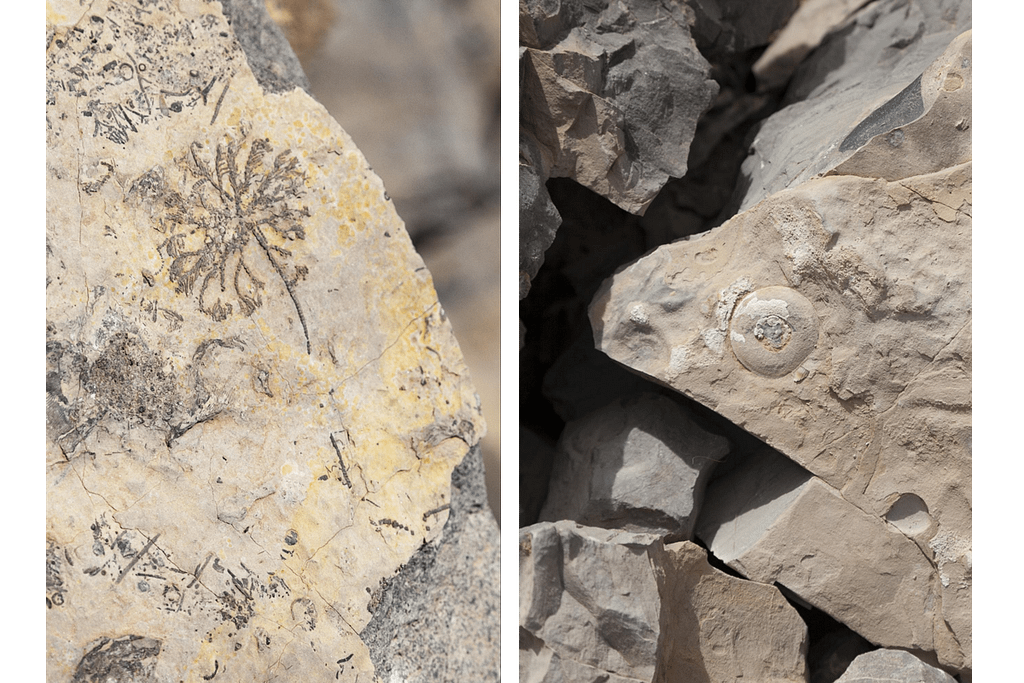
One More Side of the San Juan River, Utah
The next section of the San Juan River is entirely different from the first. The river cuts down through the Bluff Bench and into some ancient layers. The guides pointed out significant layers as they crept up the canyon walls. Paradox is the most well-known layer. It is yellow and is on a boundary underneath which oil is found. The boat captains pulled over, suggesting we walk around a bit. It turned out this stop was about more than a stretch. When I looked down at a line in the rock I was surprised to see that it was a stem to a flower that was as long as I am tall! Then we started making out shells and leaves and other fossils. Understanding that they are about two hundred fifty million years old made me feel like a blip on a geologic timeline.
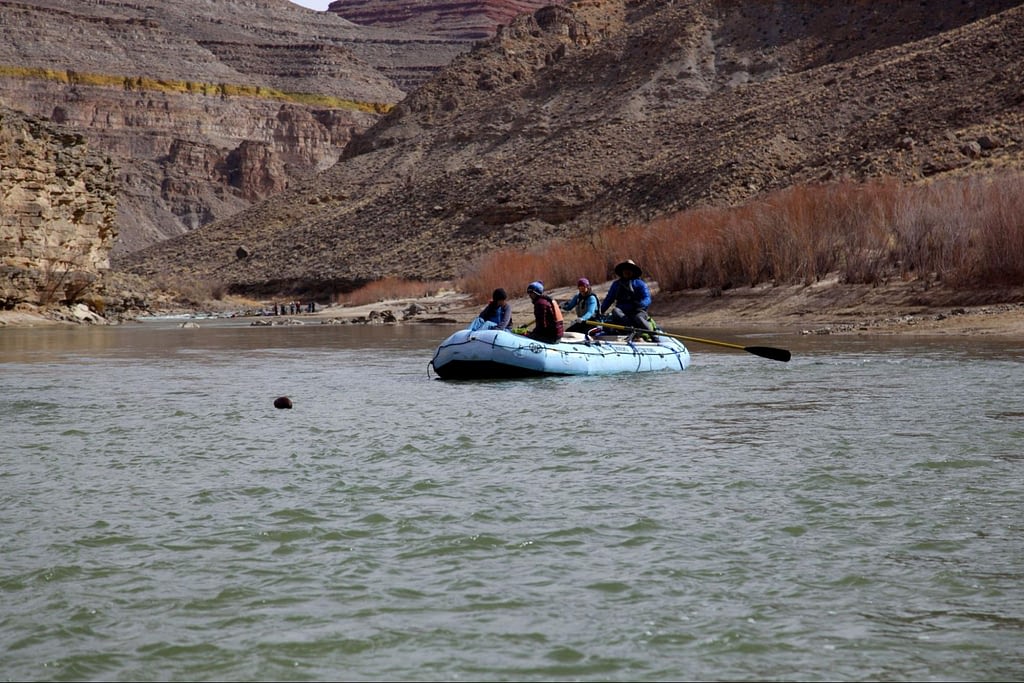
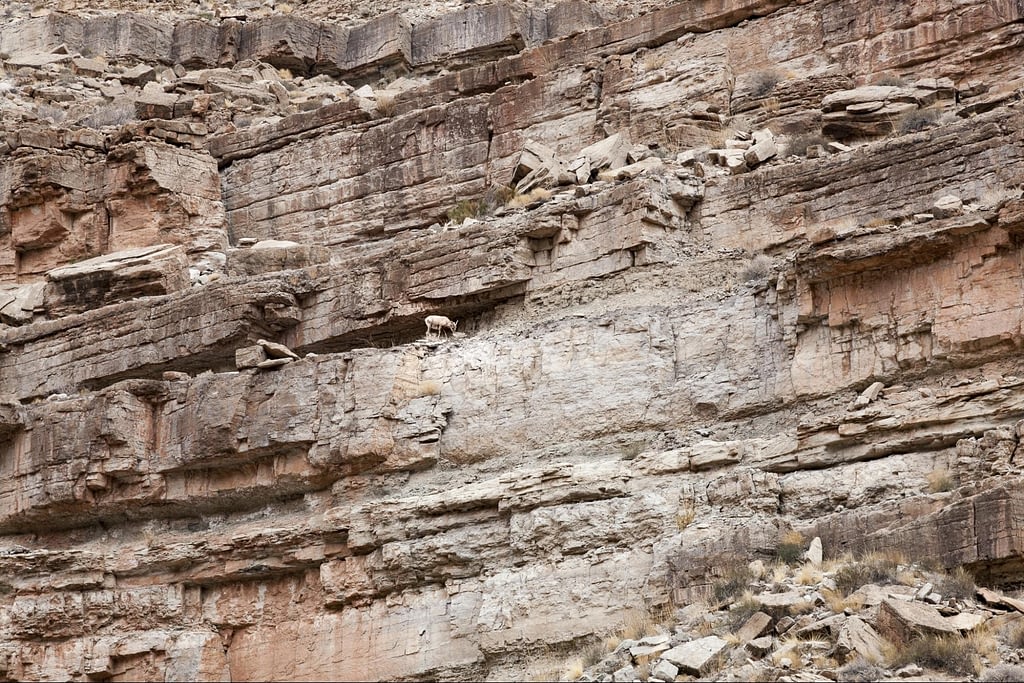
The fauna of the river also changed. From the start, we saw mud-slicked slides for beavers to have quick access into the river, but now we started seeing ducks and geese and desert bighorn sheep. I had never seen a bighorn before and hoped that a few would make their presence known. I was so excited to actually see several of them. The ewes grazing along the bank, and the rams showing off their stuff leaping from layer to layer on the rising vertical cliffs. They made it look so easy.
In total we had traveled 27 miles from Bluff to Mexican Hat. The river continues to Lake Powell and the Colorado River, snaking through the Goosenecks of the San Juan. Our training, however, was at an end. One doesn’t normally associate river rafting with ancient Puebloan sites and rock panels, fossils, and desert bighorn sheep. Those, along with good food, camaraderie, beautiful light in the canyon, and time to relax and play, make this river journey unique and unlike any other river trip.
Looking for an extended tour of one of the American Southwest’s most intriguing rivers? Book your 3, 4, or 7-day trip with Wild Expeditions. Complete your getaway plans by booking base camp accommodations at nearby Bluff Dwellings Resort and Spa.
